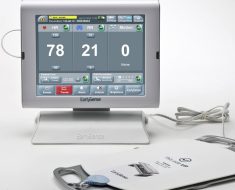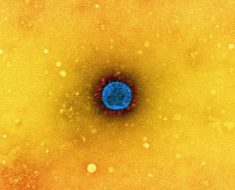Despite being offered enough food, around 50% of patients throughout the world eat too little while in hospital and this can lead to nutritional deficiencies and hamper their recovery. Nutritionist Eva Winzer from the Center for Public Health at MedUni Vienna’s Institute for Social and Preventive Medicine and Karin Schindler, Department of Medicine III, MedUni Vienna/Vienna General Hospital, have now shown that it is possible to closely monitor eating behaviour and assess meals with the aid of a digital, photographic monitoring tool. The results can be included in an individualised treatment plan for patients. The study has been published in the European Journal of Clinical Nutrition.
There are many reasons why people who are sick or who have recently had surgery do not eat enough in hospital: “Either they have little appetite due of the situation or they are not hungry enough, because mealtimes are earlier than they are used to. However, unlike in healthy people, reduced food intake can lead to clinically relevant problems and have a negative impact upon recovery and prognosis,” explains Karin Schindler, lead investigator and nutritionist at MedUni Vienna.
From a nutritional perspective, it is necessary to monitor a patient’s quantitative and qualitative food intake, e.g. if they only eat the side dishes. Monitoring would also enable patients to provide direct feedback to the kitchen about the quality of the meals they are offered. Currently, part of the hospital routine is to monitor food intake by means of “plate records,” which involves entering graphic plate symbols on a piece of paper to indicate whether a patient has eaten half a plateful or a quarter of a plateful, for example.
Nutritionist Eva Winzer from the Center for Public Health at MedUni Vienna’s Institute for Social and Preventive Medicine conducted a pilot study using digital photography on a ward of Vienna General Hospital to trial the new tool. This involved monitoring the food plates of twenty patients before and after meals over a seven-week period. She photographed and weighed the food trays before they were given out and again after the meal. In addition, the patients recorded the quantity of food they had eaten by means of “plate records.” By means of the before/after comparison, it was possible to accurately quantify how much of each food the patients had eaten.
The conclusion: this digital monitoring tool is valid, accurate and practical to use. It allows the nutritional intake of hospital in-patients to be quantitatively and qualitatively assessed using the nutritional value of the meals. As a result, therapeutic nutritional measures, such as giving additional liquid food, can be started earlier, stressed the experts. This method could also be advantageous for the quantitative and qualitative evaluation of leftover food.
Source: Read Full Article





